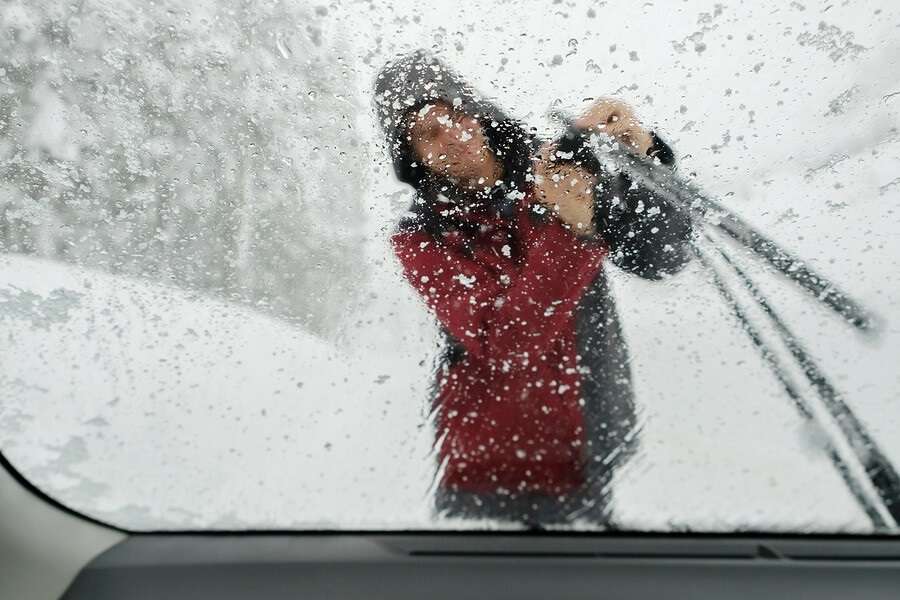Teen Driving: Safety Advice for Snowy Conditions

Passing their road test and--finally!--getting their driver's license is a teenage right of passage. For them, driving without a licensed driver beside them in a car means, "Freeeeedom!" The words "teen driving" can trigger fear in any parent, so it's important for parents to review road safety with their kids. Before your on-the-move teen hits the road, they should know how to properly, and safely, drive in snowy conditions; even if they reside in a warm-year-round climate. (You never know if they'll attend college in a cold climate, for example, and will need to drive around campus.)
Safety Tips from the Professionals
Dr. Bill Van Tassel, Manager, Driver Training Operation at AAA, shares these teen driving tips for snowstorms:
- Reduce your speed. Tires have less traction on snow, so the only way to regain the same safety margin is to reduce your speed. Driving 1 mph too slow is no big deal; driving 1 mph too fast can be deadly.
- Be very smooth with your steering and pedal inputs. Drive as though you have a bowl full of hot water on the dash, and you want to avoid spilling even a drop.

Photo credit: AAA
Adds Van Tassel: "Do one thing at a time. For example, avoid braking and turning at the same time, which puts too much demand on a single tire, which could easily lose traction with the road. Instead: brake, then turn, then accelerate--each step separate."
In snow, if your vehicle starts to skid, continue to look and steer where you want to go, advises Van Tassel. "Keeping your eyes on your target, for example, the open roadway ahead, will give you the best chance of going where you want--instead of into the ditch!"
If the car's right wheels fall off the road edge, absolutely do NOT slam on the brakes! This is a common first response for drivers of any age, says Van Tassel. "Instead, keep the steering wheel straight, and gently coast down your speed, before steering back onto the roadway."
Teen Driving Tips for Inclement Weather
Maryland residents Ryan and Eileen Buckholtz launched a Web site called Teen Driving in memory of students in their community who passed away from car accidents. Here is their advice for driving in inclement weather, especially snow and ice:
- Always keep an ice scraper with a brush in your glove box in case it snows or sleets
- Check that you have wiper fluid/de-icer in your car
- Remember: Bridges and overpasses can freeze before the roads do
- Ensure that your windshield washers works
- When driving on slippery surfaces, brake gently and use light pressure on the accelerator pedal when starting. If your wheels start to spin, let up on the accelerator until traction returns.
- If you have to dig your car out of snow, or if you've backed into snow, make sure your exhaust tailpipe is clear. If your tailpipe is blocked, you may be breathing carbon monoxide.
- In case of emergency: If your car is white and you're stuck in a snow mound or ditch, your car may be camouflaged by the snow. Turn on your headlights so other drivers can see you.
- When starting out in bad weather, test your brakes to see how far it takes you to stop.
- If you're stuck in ice or snow, try putting your floor mats under the edge of the tires to give them traction.

Additional Tips for Teen Drivers
When driving in general, regardless of the weather, always be aware. If you don't trust what another car near you is doing, "always assume the other driver will take the action that puts you at the most risk, and have a plan to respond, if needed," advises Van Tassel. In other words, be prepared for an emergency, and think as fast as you can about what to do in that potential emergency. "It's sort of like playing the 'What if?' game on a continual basis. The goal is to never be surprised by another driver's maneuver," says Van Tassel. "Teen drivers should be ready to respond, rather than merely react. This also can help reduce the tendency to become distracted--you're too busy watching other drivers and predicting what they might do."
Another important emergency rule, says Van Tassel, is to always have open space on at least one side of your car. "Depending on what happens directly ahead, you may need to move into that space immediately. If you don't have the space, you don't have a way out.
Parents should sit down with their newly-minted driver to discuss their safety rules, stress why seatbelts are a must-wear, and what to do in an emergency. As for teens: enjoy that freedom, but be careful, and avoid taking risks on the road. Teen driving is a topic the whole family should discuss, and AAA has some great resources for parents and their teens.


